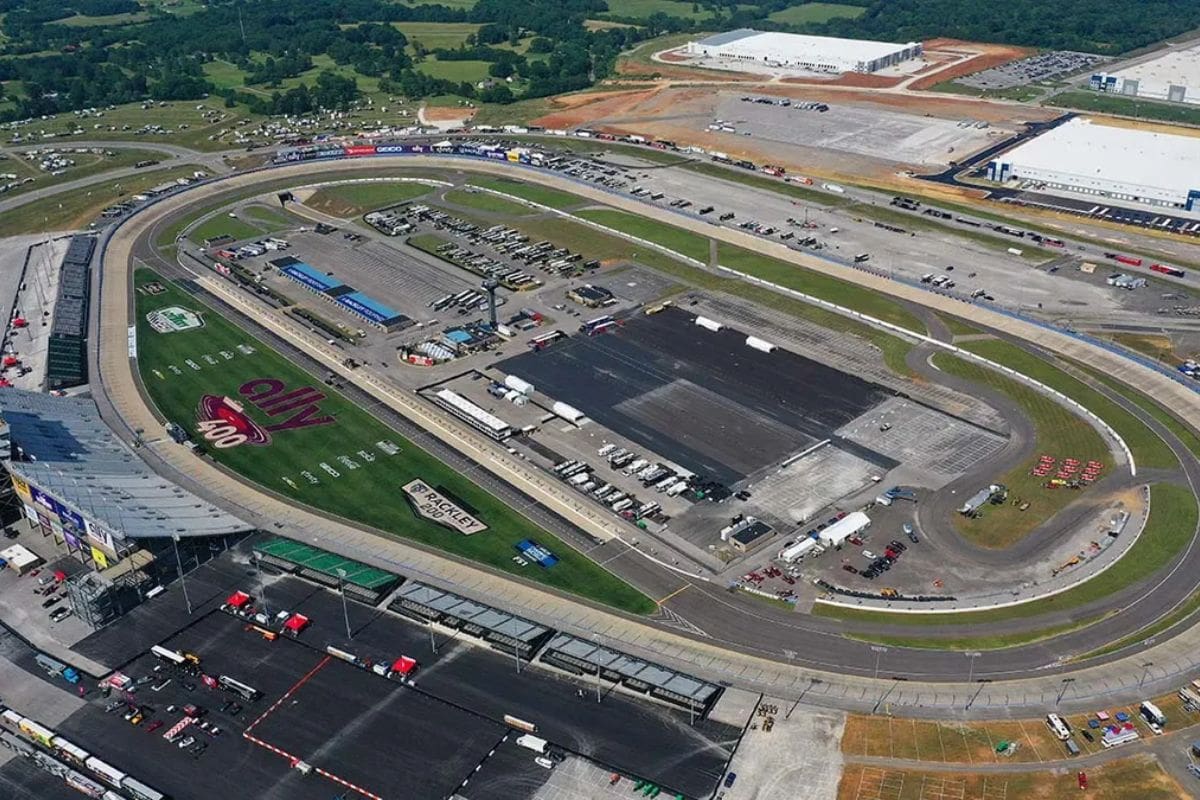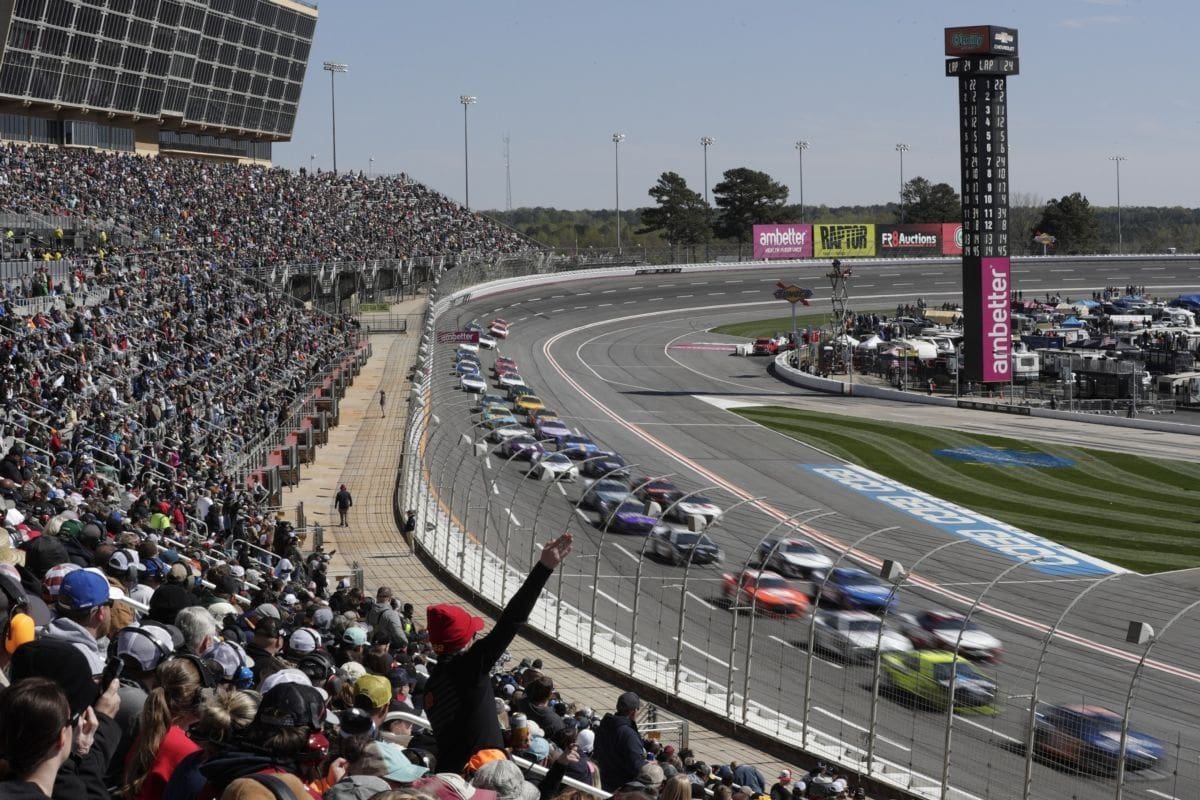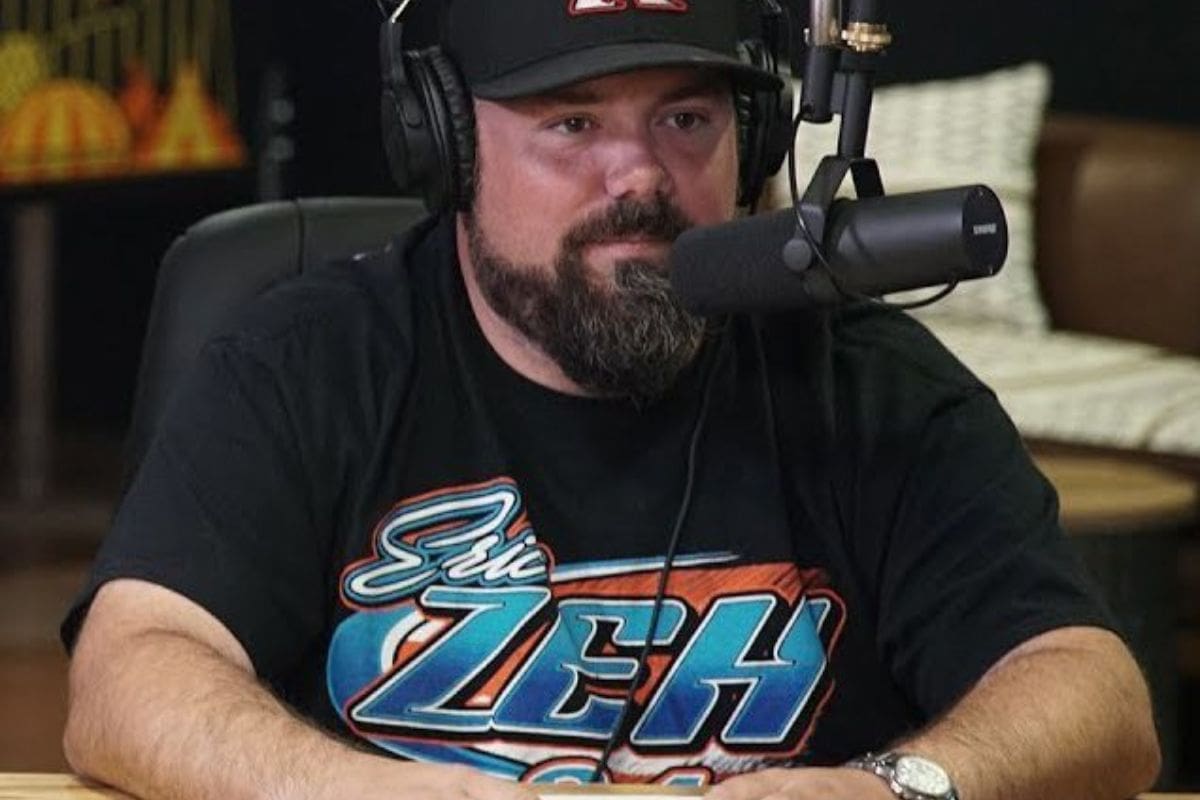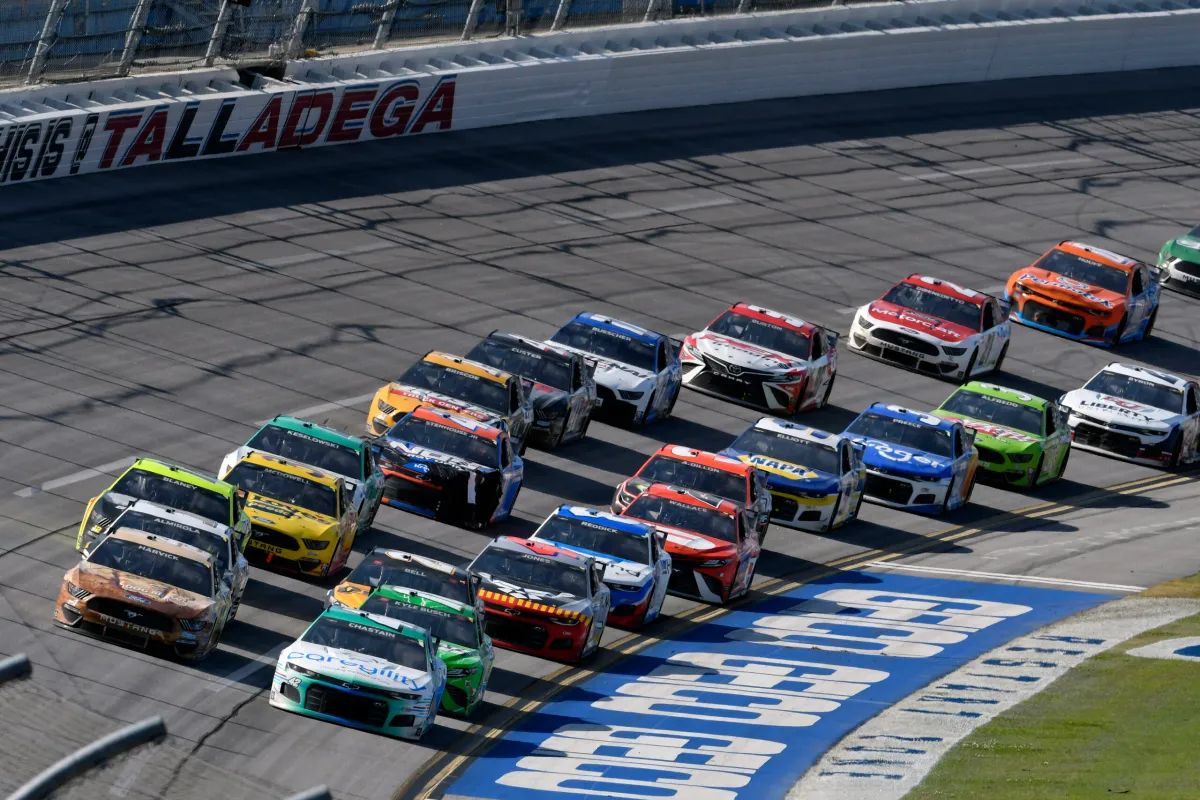NASCAR’s Superspeedway Crisis: NASCAR’s current superspeedway scenario presents a critical crossroads, as insider Freddie Kraft’s audacious recommendation to eliminate cautions at stage breaks has sparked a multifaceted debate among stakeholders. This proposal, aimed at countering dwindling on-track excitement and a reliance on fuel mileage tactics, raises vital questions about the balance between safety and competitive integrity. While some view it as a necessary evolution to energize the sport, others worry about the implications for driver safety and race strategy. As discussions unfold, the potential ramifications of such a shift remain to be seen, inviting further exploration into its viability.
Key Highlights
- The 2024 NASCAR season faces criticism for reduced on-track action and excitement, particularly at revamped superspeedway events like Atlanta.
- Freddie Kraft’s proposal to eliminate stage break cautions aims to enhance racing aggression and increase fuel management challenges for drivers.
- Current fuel mileage strategies are seen as detrimental, encouraging conservative racing tactics that detract from overtaking and competitive dynamics.
- Denny Hamlin’s struggles at Atlanta highlight the challenges of balancing data-driven strategies with real-time track conditions affecting performance.
- Mixed reactions from teams indicate a divide between tradition and innovation, emphasizing the need for changes to enhance fan engagement and competitive racing.
NASCAR’s 2024 Superspeedway Racing Analysis
As a longtime fan of NASCAR, the analysis of the 2024 superspeedway racing landscape reveals a striking contrast between expectations and reality. NASCAR President Steve Phelps heralded the season as a pinnacle of racing excellence, claiming it displays the best performances ever witnessed on these iconic tracks.
“I think the racing that our drivers have put on is extraordinary. I think it’s the best racing we have ever had on those race tracks.” – Phelps
However, recent observations from events, particularly the reconfigured Atlanta race, indicate a troubling trend: on-track action has diminished considerably, undermining the very core of competitive racing.
During the Atlanta race, passing opportunities were alarmingly scarce, with only a handful of attempts at utilizing a tertiary lane. This raises crucial questions about the direction of superspeedway races in the NASCAR Cup Series, which seem increasingly dictated by tactical movements rather than raw speed and skill.
The focus has shifted toward fuel economy and the tactical management of pit stops, detracting from the exhilarating wheel-to-wheel competition that fans cherish.
The current dynamic suggests that teams are prioritizing race strategy over aggressive racing, resulting in a lack of the thrilling exchanges that once characterized superspeedway events.
As fans, we must ponder the implications of this tactical shift. Will NASCAR adopt measures to restore the excitement and overtaking that define the sport, or will the trend toward calculated racing persist?
Superspeedway Package and Recent Changes
The introduction of the new superspeedway package in 2022, which features 510 horsepower and a 7-inch spoiler, aimed to revitalize the racing experience at iconic venues such as Daytona, Talladega, and Atlanta Motor Speedway. This package was designed to improve competitive parity and promote more thrilling on-track action, a vital aspect of NASCAR’s appeal.
Alongside the new package, Atlanta’s track underwent notable modifications, including an increase in banking to 28 degrees and a reduction of the racing surface from 55 feet to 40 feet. These alterations were intended to create a more dynamic racing environment and boost spectator excitement.
Despite these ambitious changes, some insiders argue that the intended revitalization has not been fully realized. Observations indicate that fuel mileage strategies have come to dominate the races, often overshadowing the desired emphasis on overtaking and aggressive racing. This reliance on fuel conservation tactics has led to a perception that the races may lack the vibrancy and unpredictability that fans and drivers seek.
Furthermore, the narrowing of the racing surface has raised questions about the balance between safety and competitive racing. While the alterations may have been designed to improve entertainment value, the actual outcomes suggest a complex relationship between car performance, driver strategy, and race dynamics.
Freddie Kraft’s Critique and Proposed Solution
Critiquing the current state of superspeedway racing, Freddie Kraft has voiced considerable concerns regarding the impact of fuel mileage strategies on competitive dynamics. He argues that the emphasis on fuel conservation often leads drivers to prioritize point maximization over aggressive racing, resulting in a lackluster spectacle for fans and a dilution of the sport’s essence.
Kraft’s critique points to a systemic issue where the current racing strategies encourage a conservative mindset, ultimately stifling the spirit of competition. To remedy this, he proposes the elimination of cautions at stage breaks, suggesting that such a change could improve the complete racing experience. By doing so, drivers would be compelled to adopt a more aggressive approach, as the absence of cautions would force them to manage fuel more actively and tactically throughout the race.
“I don’t want fuel mileage to dictate how hard we race in plate races. You know, and it’s not as big of a deal at Atlanta as it is at Daytona Talladega. But it’s still a pretty big deal they were doing it you know you had a save you saw the 2 car, (Austin Cindric) dominates the first two stages just out there riding. He’s dominating, he finished, I think second in the first stage wins the second you never saw him in the third stage. Because he had to take more fuel than everybody at the end of the second stage.”
“I mean I think a solution could be just like Brett’s been harping on for about 10 years now. It seems like eliminate the cautions at the stage breaks.” -Kraft
Denny Hamlin’s Performance and Atlanta Race Insights
Freddie Kraft’s concerns about the current state of superspeedway racing are echoed in the recent performance of Denny Hamlin at the Atlanta Motor Speedway. Hamlin, driving the Joe Gibbs Racing #11 car, faced a challenging race that highlighted the complexities inherent in modern superspeedway strategy. The team adopted a data-driven approach, aiming to minimize risks and optimize performance. However, this strategy backfired, culminating in a disappointing 32nd-place finish.
Central to Hamlin’s struggles was the loss of grip on the track, a vital factor that heavily influenced his racing dynamics. The decreased traction not only hindered lap times but also complicated the car’s handling, rendering it difficult for Hamlin to maintain competitive pace. As the grip diminished, the ability for cars to race closely—a hallmark of superspeedway excitement—was severely compromised, leading to a more sluggish race.
“The track had lost grip. Everyone’s car wasn’t handling quite as good as it was. The pace was about 6 to 8 tenths off what it was in the spring. The track is a little slower, that means, cars are driving a little bit worse. With that I think the cars weren’t able to get as close to each other as they were in the spring.” – hamlin
Hamlin’s insights reveal a broader issue within superspeedway racing, where the balance between data analytics and real-time track conditions is precarious. The Atlanta race served as a microcosm of the challenges drivers face in adapting to evolving track surfaces and grip levels.
In this situation, the reliance on historical data must be tempered with an acute awareness of current conditions, emphasizing the need for adaptive strategies. As NASCAR navigates its superspeedway crisis, Hamlin’s experience highlights the necessity for continuous evaluation of racing techniques and track conditions, ensuring that drivers can effectively respond to an unpredictable environment.
Evaluation of the Current Superspeedway Package
Analyzing the current Superspeedway package reveals substantial shortcomings compared to its predecessors, leading to a growing discontent among drivers and fans likewise. Insiders, including notable figures like Kraft, argue that the current configuration hampers overtaking opportunities, resulting in a less dynamic racing environment at iconic tracks such as Daytona, Talladega, and Atlanta. This shift towards a tactic-focused racing approach has diminished the excitement that once characterized superspeedway events.
Critics, including Kraft, emphasize that the previous package allowed drivers to make bold moves and create momentum shifts, leading to thrilling races packed with overtakes. Conversely, the current package has led to a more predictable racing narrative, where tactical positioning takes precedence over driver skill and audacity.
“The package ready isn’t great obviously it’s hard to pass. That’s why we see this that people ask me all the time like why didn’t we do this with the old car why did we save fuel. Because it was easier to pass, you could make moves you could you do things with the old car create runs and go from the back to the front. Now once we get you see it all the time at Daytona, Talladega you see it yesterday. Once you get that group whoever comes out of the pits for the last run in front stays up there.” – Kraft
As NASCAR navigates these challenges, the need for reevaluation becomes increasingly urgent. Addressing these deficiencies in the Superspeedway package is crucial to restore the excitement and competitiveness that fans and drivers have come to expect from this premier form of motorsport.
News in Brief: NASCAR’s Superspeedway Crisis
The ongoing debate surrounding NASCAR’s superspeedway crisis highlights considerable concerns regarding the current racing package, particularly the impact of fuel mileage strategies on on-track excitement. Freddie Kraft’s proposal to eliminate cautions at stage breaks aims to improve competition and restore fan engagement. As stakeholders evaluate these changes, the potential transformation of NASCAR’s racing dynamics becomes evident. A careful balance between safety and creative strategies will be crucial to guarantee the future vibrancy of the sport.
ALSO READ: NASCAR No-Practice Rule: Superspeedway Disaster Waiting to Happen?”




